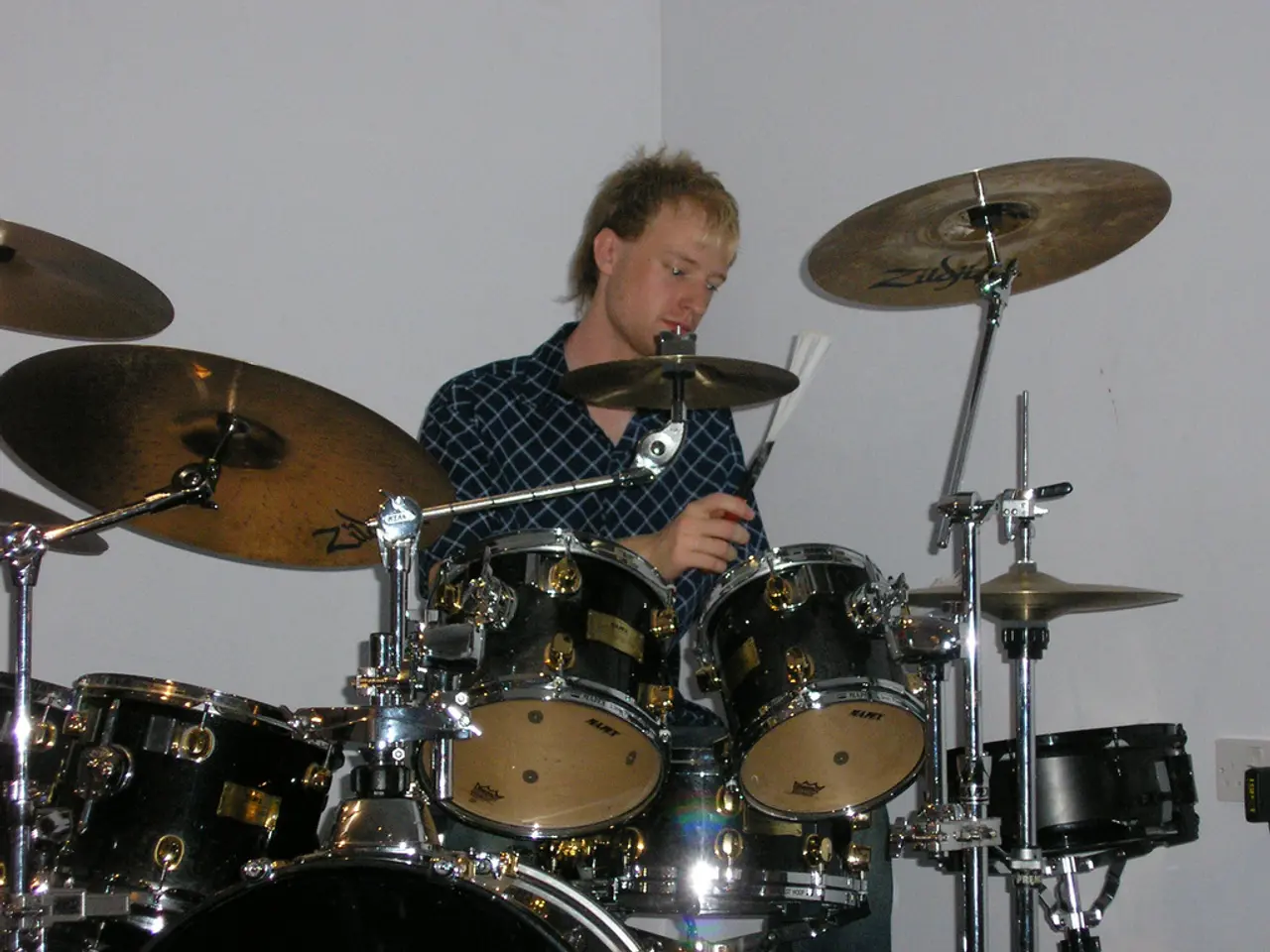Guide to Amplifying Electronic Drum Sounds for Optimum Force
Mixing Electronic Drums for Punch, Clarity, and Energy
In the world of electronic music, the kick drum often serves as the anchor, driving the rhythm and filling out the low end. To make these drums hit hard, stay clear, and maintain energy throughout a track, a combination of targeted EQ, dynamic control, transient shaping, and thoughtful bus processing is essential.
Kick Drum
The kick drum's EQ should be tailored to carve out space in the mix. Boosting low frequencies (around 60-100 Hz) can add weight and punch, while cutting muddiness (200-400 Hz) helps clear out unwanted frequencies. A touch of high-mid presence (1-4 kHz) can emphasize the attack, making the kick cut through the mix. Compression following EQ can tighten the sound, and transient shaping can enhance the initial hit, ensuring the kick remains energetic and clear.
Snare and Toms
Similar EQ carving techniques should be applied to the snare and toms to enhance body and presence. Transient shaping can help balance attack and sustain, and gentle compression can glue the drum tone together.
Overheads and Room Mics
For overheads and room mics, EQ should be used to clean unwanted frequency buildup, subtle compression should be applied to maintain consistency, and reverb should be used carefully to keep clarity without washing out the sound.
Drum Bus Processing
Light bus compression can help unify the drums and add subtle control, while parallel compression adds punch without losing dynamics. Subtle saturation or harmonic exciters may add character and energy to the mix.
Transient Shaping
Transient shaping is crucial to emphasize drum attacks, ensuring drums cut through the mix and maintain energy and clarity.
Volume and Gain Staging
Drums should be kept loud enough to command attention but balanced relative to other elements to avoid cluttering the low end. Frequency slotting ensures that drums do not overlap too much with bass/instruments in key frequency areas—using sidechain compression if necessary.
Separating the Hats from the Snare
To help the hi-hats breathe, a narrow cut in the snare's upper mids can be used.
Envelope Adjustment
Adjusting the envelope (attack, decay, sustain, release) of each drum sound allows for shortening tails, smoothing out harsh transients, aligning layered sounds, and shaping grooves.
Avoiding Overlayering
Avoid overlayering to prevent phase issues and a cluttered mix.
Adding Harmonics, Warmth, and Perceived Loudness
Tape or analogue-style saturation plugins can add harmonics, warmth, and perceived loudness to the drum mix, especially for genres like house, techno, or drum and bass.
Automating Delay
Automating the delay feedback or wet/dry mix can add variation throughout the track.
Universal Audio's detailed workflow, demonstrated in July 2025, showcases these techniques applied with UAD plugins for professional results, offering before/after comparisons and emphasizing minimal but smart processing. By following these steps, electronic drums can be made punchy, distinct, and energetic across the track.
Technology
Universal Audio's detailed workflow, demonstrated in July 2025, showcases these techniques applied with UAD plugins—a technological tool—for professional results, offering before/after comparisons (using digital technology for comparison).
Plugins
Tape or analogue-style saturation plugins are technological tools that can add harmonics, warmth, and perceived loudness to the drum mix, especially for genres like house, techno, or drum and bass.




